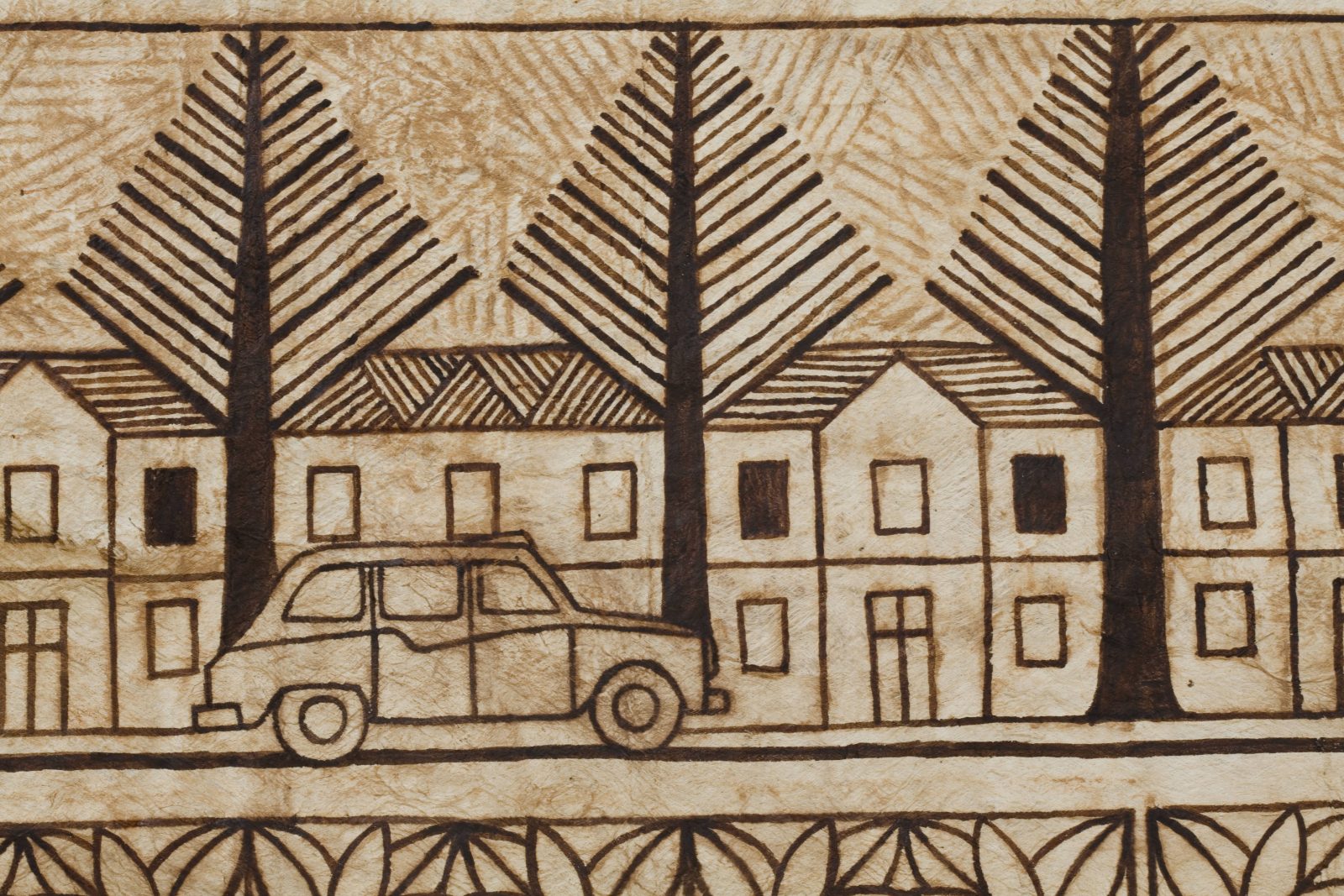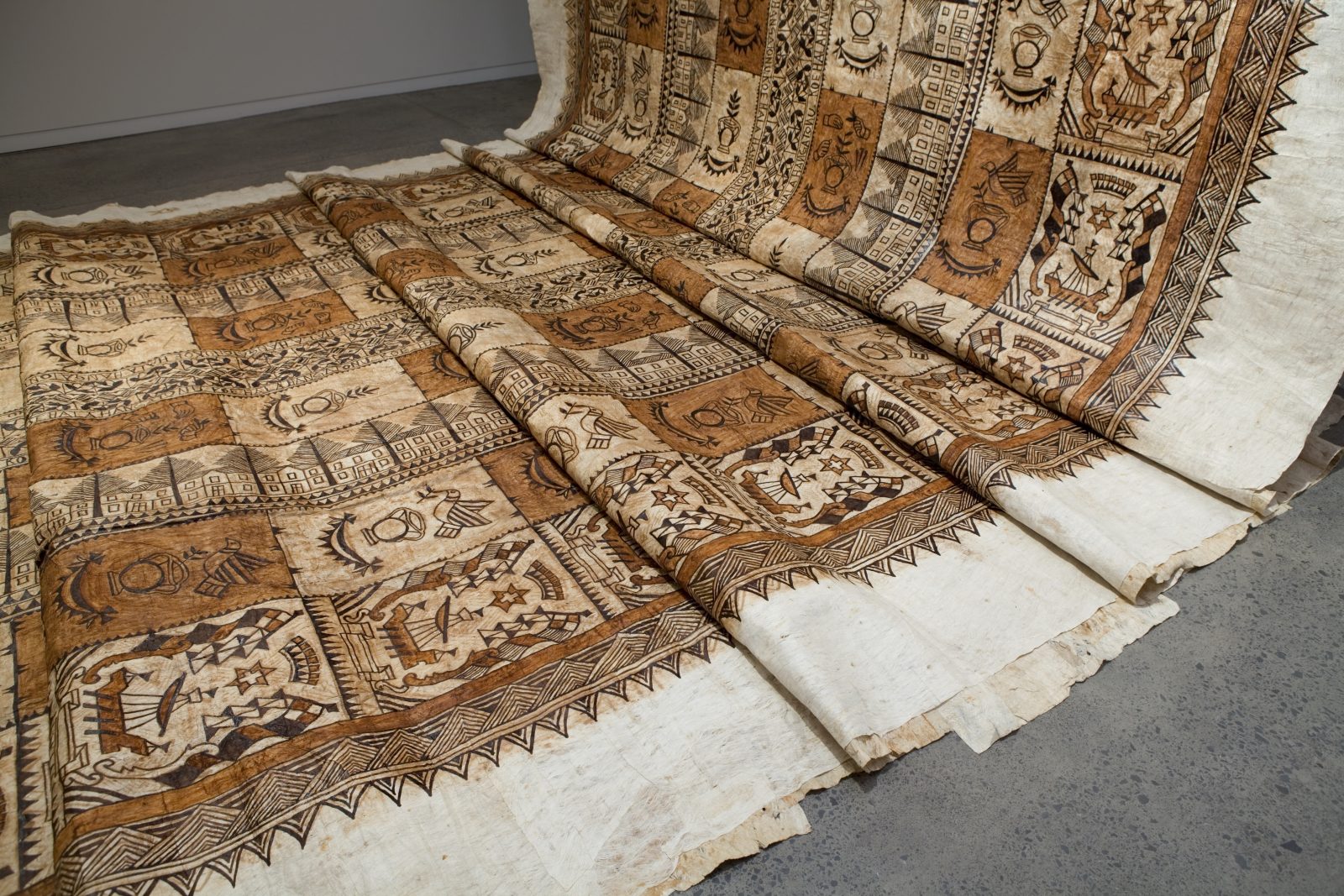Robin White with Ruha Fifita
Ko e Hala Hangatonu: The Straight Path 2013
8 March - 13 April 2013
Robin White’s large-scale painted tapa installation project in collaboration with Tongan artist Ruha Fifita is Two Rooms’ visual arts highlight for the 2013 Auckland Festival. Ko e Hala Hangatonu’s ambitious scale, hybrid mix of historical and contemporary iconography, patterns and references, which range from the Pacific to western Europe and the Middle East, make it the artist’s most ambitious project to date.
‘An exciting aspect of the project is making work that, while acknowledging and honouring tradition, explores contemporary themes. I used a well-known traditional Tongan design as a starting point for the Hala Hangatonu installation, taking a familiar framework to explore new ideas, incorporating fresh visual images and symbols from diverse cultures and aesthetic traditions,’ White says.
There is a traditional and often-repeated Tongan pattern called the hala paini – the pathway of pines. It represents the road, fringed with Norfolk pines, that leads to the king’s palace in Tongatapu. The artist has taken the idea of a pathway (hala) as the conceptual underpinning of the work and recast it as the hala hangatonu – the straight path. As well as its literal meaning as a straight path this term, the hala hangatonu, is also, in a metaphorical sense, the path or course of action that takes you directly to where you need to be.
As with the hala paini, the hala hangatonu has a physical anchorage, namely Ben Gurion Avenue, in Haifa, Israel, and the steps and terraces comprising the Baha’i gardens and shrines on the slopes of Mount Carmel, forming a continuum from the Mediterranean shore to the crest of the mountain. Distinctive features from these geographic locations are included in the tapa design – for example, the houses of the German Templar Colony on Ben Gurion Avenue and the cypress trees that fringe the pathways on the slopes of Mount Carmel. These features are combined with Tongan customary forms and patterns, alongside details from early European art, in particular Duccio di Buoninsegna’s Maestá altarpiece in Siena cathedral and Hans Memling’s The Man of Sorrows in the Arms of the Virgin (now in the National Gallery of Victoria).
While carrying the DNA of its hala paini ‘parent’, the visual narrative of Ko e Hala Hangatonu, with its collage of references to Tongan and European traditions set in a contemporary context, invites reflection on a way forward through the current challenges that we face as communities and individuals.
– Paula Savage
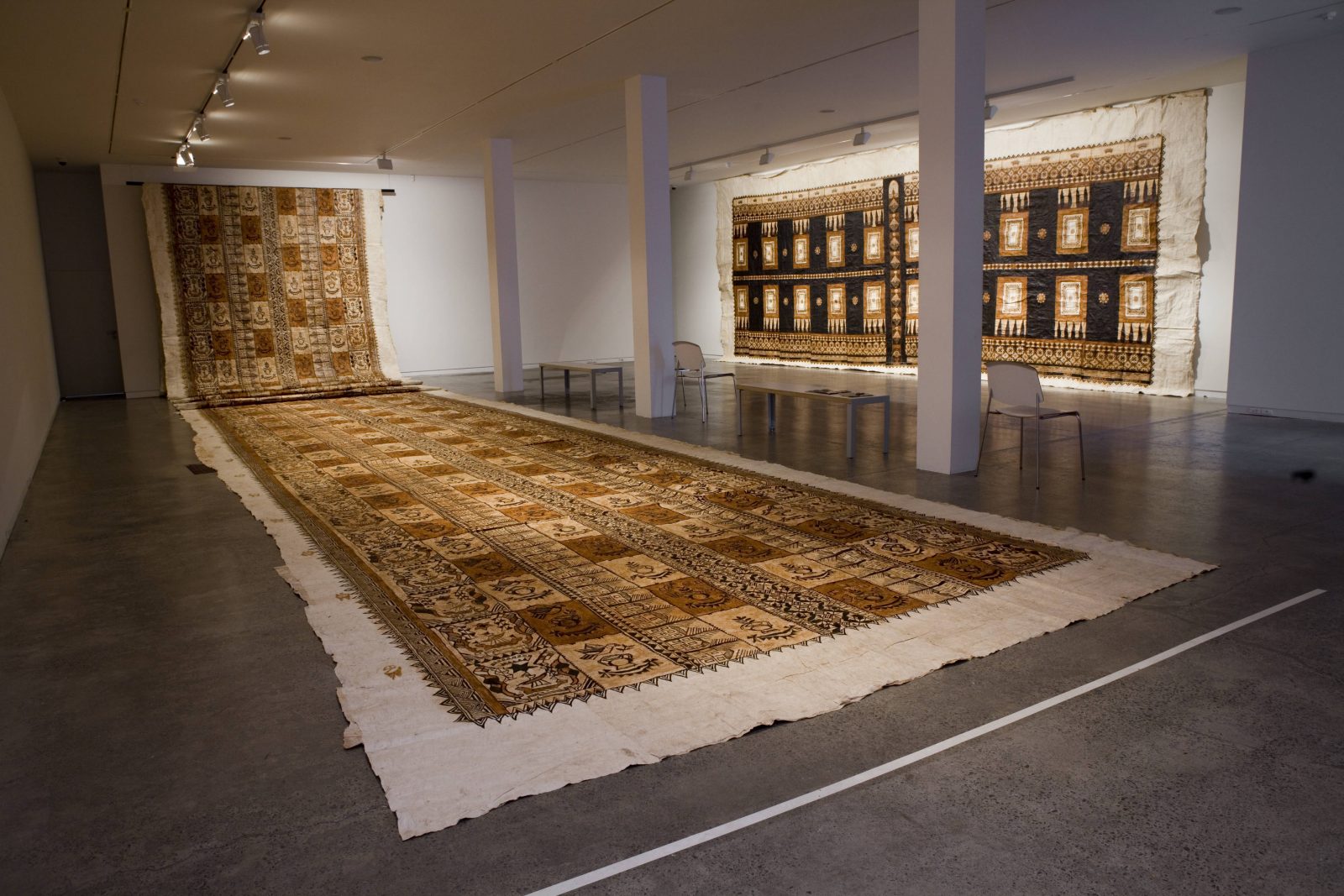
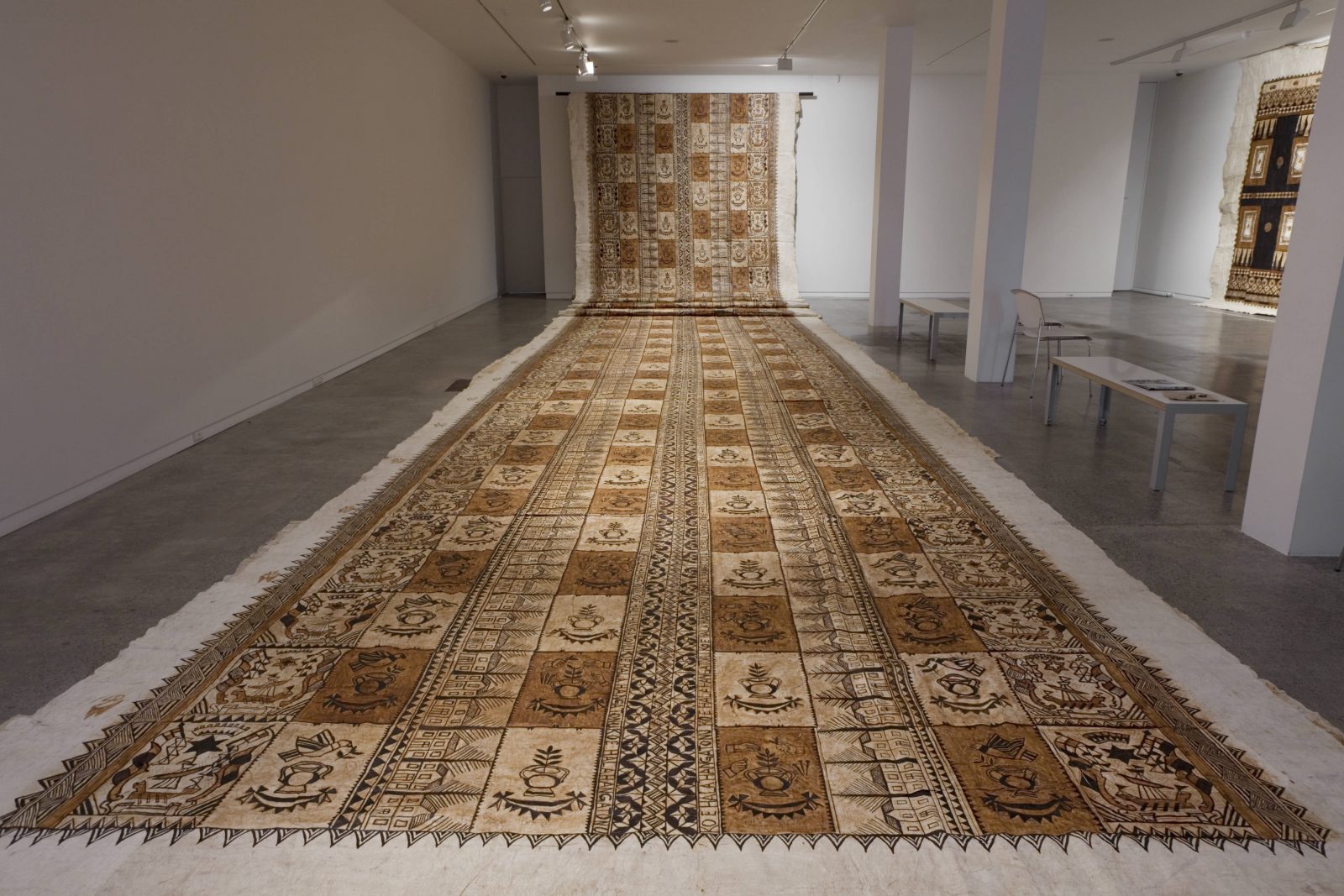
barkcloth, earth pigments, natural dye
3660 x 240790mm
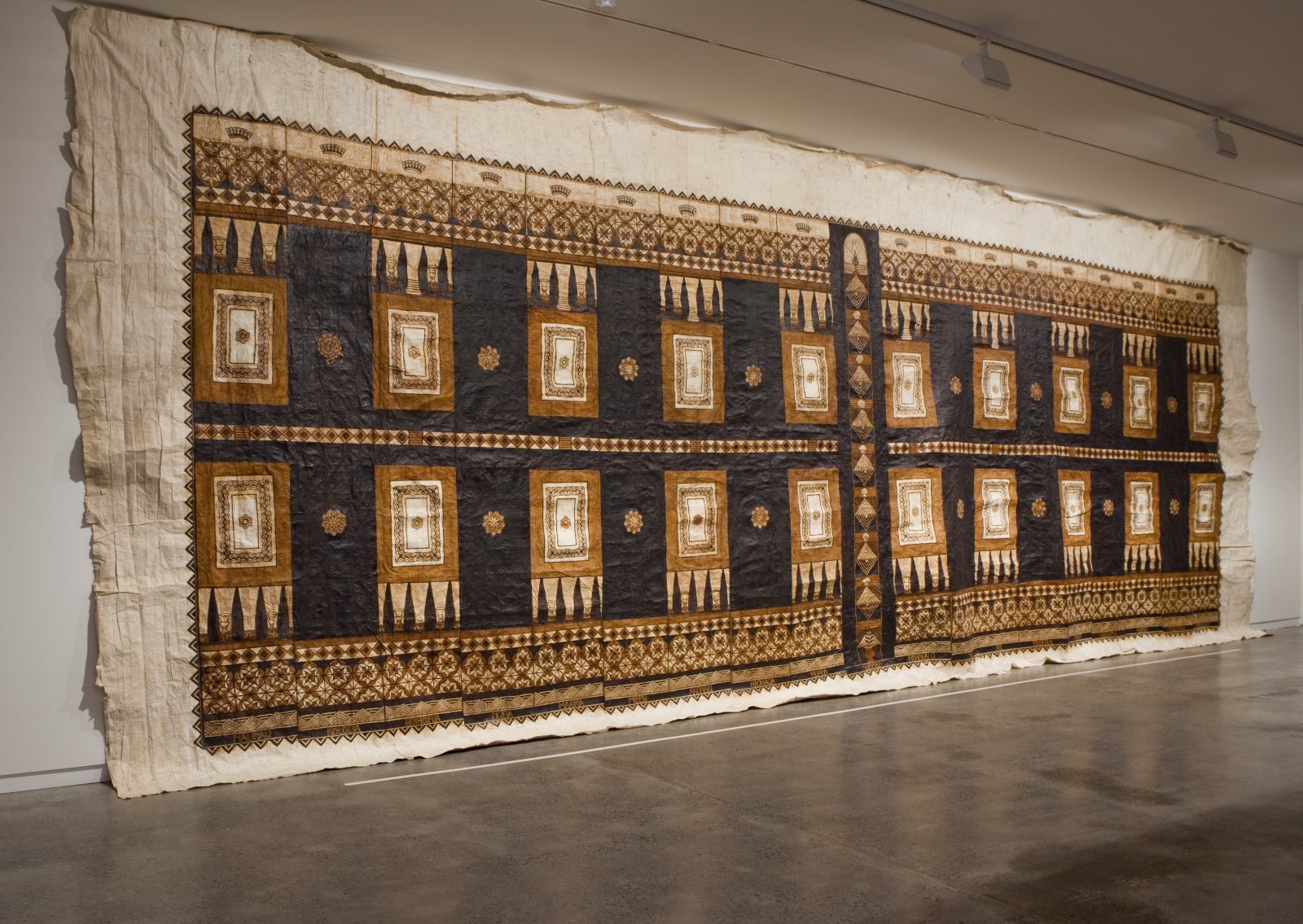
barkcloth, earth pigments, natural dye
3690 x 9360mm
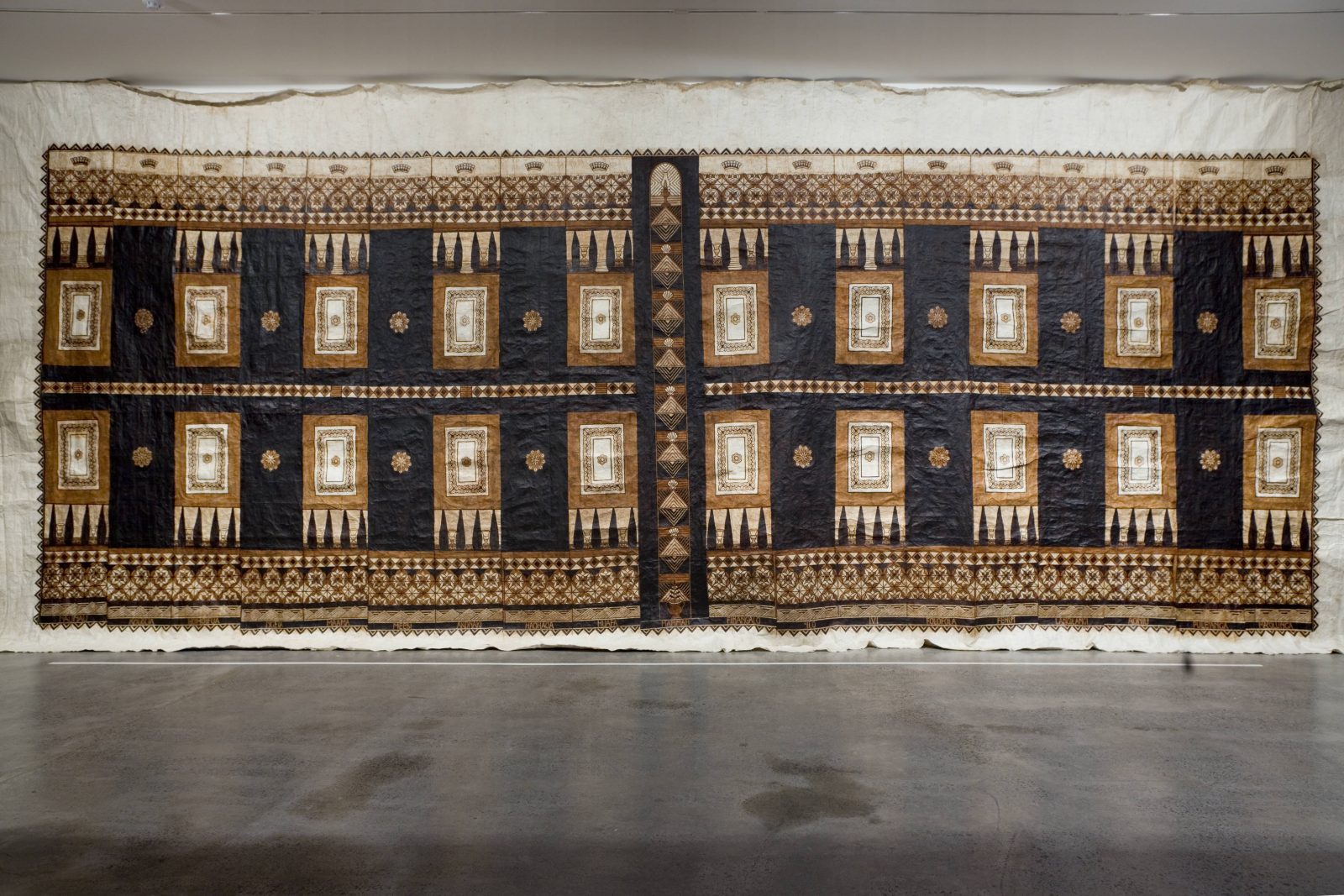
Barkcloth, earth pigments, natural dye
3690 x 9360 mm
